Kanchanjunga Base Camp Trek
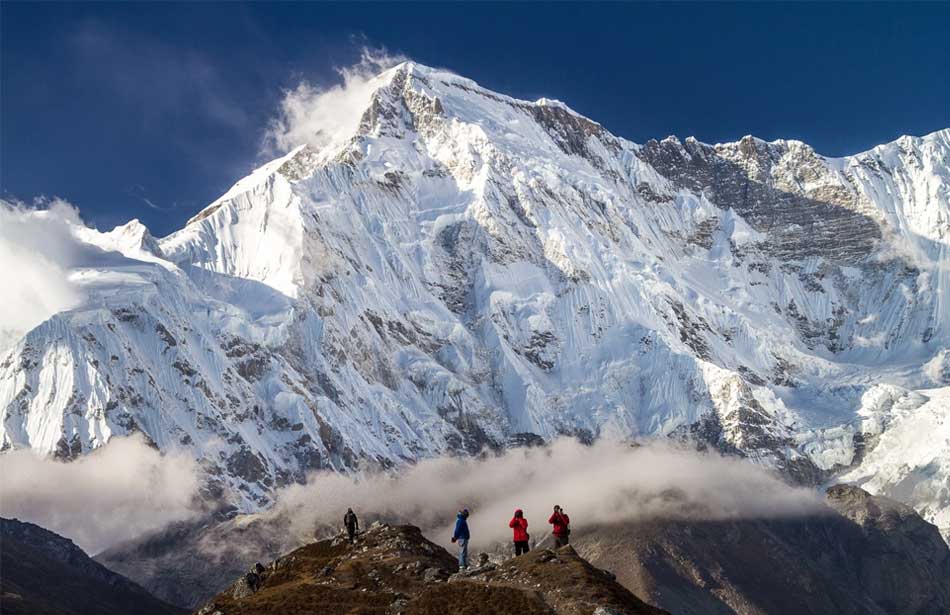
Kang-chen-zod-nga”, means “Five Great Treasuries of the Snow”, but in fact it has seven major summits. To the locals Kanchenjunga which stands at a height of 8,585m the third highest mountain in the world, is the abode of gods who bestow prosperity and goodwill on them and their lands, while to the climbers of this mountain the phrase “Five Great Treasuries of the Snow” takes on a slightly more ominous tone. The avalanches at Kanchenjunga are said to be the largest anywhere!
Since the locals worship the mountain, there is a tradition among mountaineers not to stand on the actual summit. All successful climbs have stopped just short of the summit honouring an old promise made by the leader of the first successful attempt in 1955 to the Maharaja of Sikkim.
Kanchenjunga lies on the eastern border of Nepal providing a great chance to experience remoteness, spectacular mountain scenery, diverse flora and fauna and rich local culture, quite different to those found further west.
We begin the journey to Kanchenjunga with a flight from Kathmandu to Taplejung (Suketar). From Suketar the trek leads to Chauki through the villages of Mitlung, Ghunsa, Khambachen and Lhonak to Pangpema (5,140m) which is also the base camp for expeditions attempting the North Face of Kanchenjunga II and the culmination of the first part of the trek.
NOTE: During the trip; weather, local politics, transport or a multitude of other factors, that are beyond our control can result in a change of itinerary. It is, however, very unlikely that the itinerary would be substantially altered; if alterations are necessary the leader will decide what is the best alternative, taking into consideration the best interests of the whole group. Where a change does occur, we do everything we can to minimize its effect, but we cannot be responsible for the results of changes or delays.
Flight Delay in Kathmandu and Lukla
Twin Otter is the primary mode of transport to and from the airstrip at Lukla. This service is fairly dependable. Sometimes, flights (to and from Lukla) may be cancelled due to mountain weather conditions or technical problems. In such case, Himalayan Trail Blazer will charter a helicopter to ensure you are on schedule for your international flight. The helicopter can fly if the visibility is 1500m, while the twin otter can fly if the visibility is 5000m, as per Nepal’s Civil Aviation rules.
The cost of the helicopter is payable directly to our Kathmandu office in the event that this service is utilized. US cash, traveler’s cheques, or credit cards (Visa Cards, Master Cards only) are accepted. You will be given a receipt upon payment so that you may claim the amount from your travel insurance. The minimum cost will be US$500 and maximum US$3500 depending on the number of group members.
Day 1: Kathmandu Arrival (1300m), Transfer to Hotel & Briefing
After you arrive at Tribhuvan International Airport in Kathmandu, you will have to go through custom formalities. Afterwards, you will be greeted by our representative who will be anxiously waiting for you with a placard displaying your name in his hand. You will be transferred to the 3-Star category hotel in a private vehicle. Once you get refreshed, you will get briefing regarding the itinerary. Enjoy welcome dinner in the evening where you can taste authentic Nepali dinner. Stay overnight in a hotel.
Day 2: Sightseeing program in capitalcity, Kathmandu
Early in the morning, you will be transferred to our office for documentation work. You will also be introduced with your crew members and other trekkers who are going to join you on the trip. In the afternoon, half day sightseeing tour will be organized during which you will be taken on memorable UNESCO Heritage Tour. Tour begins with visit to Nepal’s holiest Pashupatinath Temple Complex and takes us through Nepal’s largest Bouddhanath Stupa and 2500 years old Swoyambhunath Stupa. We will return to hotel for overnight stay.
Day 3: Kathmandu to Bhadrapur flight (45 min), and drive to Taplejung (8hrs)
Day 4: Drive by local jeep Taplejung to Sekathum (1585m) - 5hrs
After breakfast in Taplejung, we take a Jeep drive from Taplejung to Sekathum about 5hrs and stay in the local teahouse there for the night.
Alternative Plan: The trail stretches uphill and downhill through terraced fields of cardamom and forest of pine and oaks to lead us to Sekathum. After pursuing the escalating trail for almost an hour, we will lower down to the Tamor River via green field. This is a short journey where we will gain almost 300m altitude in mere six hours. From Tamor River, we will continue walking till we reach Ghunsa River which we will cross to arrive at Sekathum. Stay overnight in Sekathum.
Day 5: Sekathum to Amjilosa (2,395m) - 5hrs
This is going to be a bit tough day as we will be walking through slippery gorge. Crossing the suspension bridge, we will enter the forest area from where the trail stretches up and down to the river. Crossing the river via bridge, we will walk uphill to Solima Village. From Solima village, the trail lowers down to yet another river. We need to walk for almost seven hours on this day. Caution is required to walk through slippery gorges to take us finally to Amjilosa. Amjilosa is the point where we will leave lower section of Kanchenjunga region and enter Upper Section. There will be differences in vegetation, culture and local life in lower and upper section. Stay overnight in Amjilosa.
Day 6: Amjilosa to Gyabla (2,730m) - 4/5hrs
Leaving Amjilosa early in the morning after breakfast, we will take seven hours of long walk to Gyabla. We will witness many Tibetan refugee settlements on our way, mostly near Phale village. The trail continues along riverbank and traverses bamboo, fir and rhododendron forest to take us to the tiny stone house existing near to the river. We will follow the uphill trail and cross bridges at few points. We will also enjoy the views of cascading waterfall at few points. A short uphill climb will take us to the Tibetan settlement of Gyabla. Tibetan Handmade products like beads, carpet and other souvenir items are for sale on Gyabla. Stay overnight in Gyabla.
Day 7: Gyabla to Ghunsa (3,427m) - 4hrs
Leaving Gyabla, we will take the downhill trek to the river from where the valley opens wide to Phale which is also the Tibetan Refugee Settlement area. One can buy gift items like handmade rugs on Phale. We need to cross conifer and pine forest to reach Ghunsa that is inhabited by Sherpa ethnics who have different culture than Rais and Limbus who are found in Lower Section of Kanchenjunga Region. This is the place where helicopter carrying more than twenty remarkable environment conservationists including Dr, Harka Gurung had crashed. Stay overnight in Ghunsa.
Day 8: Acclimatization Day at Ghunsa
Since Ghunsa is located at an altitude of more than 3500m, it is wise to take a day of rest for proper acclimatization. There are many comfortable teahouses for accommodation in Ghunsa. Ghunsa is considered as the headquarters of Kanchenjunga North. We can explore Ghunsa or climb to the nearby ridge for better views of surrounding mountains and peaks. Another alternative is to visit the Lpasan La Monastery for which we need to walk through the forest area. We will return back to Ghunsa from the Monastery for overnight stay.
Day 9: Ghunsa to Khambachen (4050m) - 5hrs
The path from Ghunsa to Khambachen continues through the landslide area that takes us through off the beaten section of Kanchenjunga North. Leaving Ghunsa, we will follow the scenic path with views of surrounding mountains and peaks. We will walk along the edge of river towards northern territory. We will be greetd with the pleasant aura of pasture land full of lush green vegetation and rhododendron and pine forest. The trail leads us to Rampuk Kharka from where we will walk along the cascading waterfall and arrive at yet another landslide prone area. We can get close-up view of northern face of Mount Jannu once we walk past the landslide prone area. Kambachen, Lhonak and Pangpema are temporary settlements where we can find small stone teahouses for shepherd’s settlement during summer. Stay overnight in Khambachen.
Day 10: Rest Day at Khambachen
Located at an altitude of 4050m, Kambachen is a high alpine area of grass land with absence of forest. Khambachen is the perfect place for taking rest from trek as it will help us to get acclimatized to the high alpine region of northern hemisphere. This will also prepare us and refill our energy that we will require for next two days to make it to the north base camp of Kanchenjunga. We can explore the Nupchu River Valley in the afternoon. Report to the guide immediately if you are feeling unwell. Evacuation from Pangpema is difficult than from Khambachen. Stay overnight in Khambachen.
Day 11: Khambachen to Lhonak (4,780m) - 4hrs
This is going to be a long and tiring day as we need to trek for around seven hours to reach Lhonak from Khambachen. We will begin our trek early in the morning. We will walk past the field of rocks and boulders and enter Ramtang Valley as we pass through the Ramtang Monastery. This Monastery exists near to the bridge which we will arrive after passing through the cascading waterfall. We will visit the Monastery and take brief rest before continuing our journey through the landslide prone area. Keep your eyes open for loose rocks that make the path tricky. We will lower down to the river and follow the path that greets us with the first view of Lhonak settlement. There are very few small stone teahouses in Lhonak. These teahouses are a summer settlement of shepherds. Accommodation in these teahouses will not be comfortable. We might prefer accommodation in tent in Lhonak and Pangpema. Lhonak is a pasture land that is surrounded with hills and mountains. Stay overnight in Lhonak.
Day 12: Lhonak to Pang Pema Base Camp (5,143m), return to Lhonak (4,780m) - 6hrs
Pang Pema is the North Base Camp of Kanchenjunga. We will walk through the landslide prone area and fields of rocks and boulders to reach the grassy plain land of North Base Camp. We will climb to the nearby ridge for the close-up views of Mount Jannu, Chang Mountain and an incredible view of North Face of Kanchenjunga. We can meet with climbers who are on their way or have returned from climbing Peak 5950 which takes extra four days from Pangpema. Climbing Peak 5950 does not require climbing permit. After enjoying the stupefying views of Mountains and Peaks, we will retrace our route back to Lhonak where we will stay overnight.
Day 13: Lhonak to Ghunsa (3,427m) - 6hrs
Continuing our return trip, we will leave Lhonak and lower down to Ramtang Monastery. After taking brief rest in Ramtang Valley, we will walk past the landslide area to arrive at the bridge which we will cross and walk past waterfall to arrive at Khambachen. Descending trail is easier. So we can easily make it to Lhonak from Ghunsa in a single day without having to take a day of rest in Khambachen. The trail is scenic with views of Kanchenjunga, Gimmigela Peak, Mera Peak and other peaks and mountains at the backdrop. Following the descending trail from Kambachen, we will reach Ghunsa from where we can find the permanent settlements. We can meet with trekkers from Selele who are on Kanchenjunga South Base Camp Trek. Stay overnight in Ghunsa.
Day 14: Ghunsa to Selele Phedi (4,290m) - 4hrs
Leaving Ghunsa early in the morning, we will leave the trail leading us to Gyabla and choose the right path all the way to Sele Le. Selele is not inhabited by locals. We will walk past the forest of rhododendron and juniper. This region is rich in wildlife. Many travellers claim to see snow leopard on this area. So always stick together and do not walk alone. This will be our final night on northern Kanchenjunga as we will reach Cheram village on Kanchenjunga South after passing through Selele Pass on the next day. Stay overnight in Selele.
Day 15: Selele to Cheram (3,870m) - 6hrs
This is the challenging day as we need to move up and down through the steeper section. We will begin our trek early in the morning. Climbing the steep uphill section, we will make it to the summit of Sele Le Pass from where we will enjoy the views of Kanchenjunga North Face, Mount Makalu and Mount Jannu. We must climb slow and steady as it demands more energy. The path from Cheram to Ramche continues uphill. We will descend from Selele Pass and move towards the lower section of Kanchenjunga South. The trail continues through the boulder valley to Cheram which is the first village that we will find on our Kanchenjunga South Base Camp journey. We will proceed further to Yalung from Cheram where we will stay overnight.
Day 16: Cheram to Ramche (4,580m) - 5hrs
Walking past the snout of Yalung glacier which is also known as Kanchenjunga south Glacier, we will reach Simbuwa River. Crossing this river, we will advance towards Lapsang Village before making it to Ramche. Ramche is known as the Kanchenjunga South Base Camp. We can enjoy the unobstructed views of Manaslu, Kanchenjunga and other surrounding mountains and peaks from Ramche. Accommodation will be more comfortable in tents at Ramche.
Day 17: Trek to Oktang valley (4780m), return to Ramche - 5hrs
After having breakfast, we will leave Ramche and make side trip to Oktang Valley. Moving near to the ridgeline which greets us with spectacular view of Kanchenjunga South Face and southern face view of Mount Jannu, we will advance towards remote Oktang Valley where we will visit ancient Oktang Monastery. Finally, we have completed Kanchenjunga North Base Camp as well as Kanchenjunga South Base Camp in a single trip. We will return to Ramche from Oktang Valley for overnight stay.
Day 18: Ramche to Torongdin (2,995m) - 6hrs
The path from Ramche to Tortong is relatively easy. From Ramche, we will take an hour of walk from Ramche to Cheram at which point the trail branches in two directions. We will choose the right hand side path and cross Simbuwa River to enter the forest of rhododendron. Trek from Ramche to Tortong almost takes seven hours during which we will lose altitude of more than thousand meter. Compared to the high alpine region, there is well management of accommodation in tea houses in Lower Section of Kanchenjunga including Tortong. Have a comfortable stay at Tortong.
Day 19: Trek to Kengsara - 6 hrs)
From Tortong, we will take the newly build shorter trekking route over Yasang instead of traditional longer route to yamphudin to Suketar. Tortong and Kengsara is quite a long day walk crossing over Yasang la, its mostly uphill hike, this route makes the trek day shorter by 2 days. We stay in over night at Kengsara in a local lodge and next day short walk to Lapsetar from where we get local jeep to Taplejung.
Day 20: Short walk (2 hrs) to Lapsetar / Zero Point and drive to Taplejung same day - 5 hours −
From Kengsara, we will follow the trail along green field to the collection of teahouses. Advancing further, we will reach Lapsetar or little further to Zero Poing. This is a short yet pleasant walk. From there we take local jeep to Taplejung about 5 hours drive on dirt road, we reach Taplejung in the late afternoon / evening only. Stay in Guesthouse in Taplejung Bazar. See around the small beautiful town and experience the local livelihood.
Day 21: Drive to Bhadrapur (8hrs) and fly to KTM (40min)
We will try to catch an early morning flight from Suketar to Kathmandu directly. If this flight is not available, then we take drive to Bhadrapur (8 hrs) and take later afternoon flight to KTM the same day. You will be transferred to hotel for overnight stay.
Day 22: Free day, shopping and celebration meals in the evening
This is rest day. Spend the day as you like. You can go for shopping in Thamel where you can buy souvenir items. Upon your interest, we can also arrange for guided sightseeing tour. Farewell dinner will be served in the evening
Day 23: International Departure to home
You will be transferred to the Airport three hours before your scheduled flight. Safe journey. We hope to see you soon.
Cost Includes
– Airport / Hotel / Airport pick up & drop by private tourist vehicle.
– Standard twin sharing accommodation in a three star hotel in Kathmandu; Breakfast included. (4 nights)
– Guided city tour in Kathmandu by private tourist vehicle.
– All your standard Meals prepared by our expert camping cook and kitchen team during the trek (Breakfasts, Lunches and Dinners).
– Tented accommodation and equipment during the camping trek. (We will provide fully water proof two men tents, dining tents, kitchen gear, dining table, chairs, toilet tents, shower tent etc.)
– Local Himalayan Trail Blazer licensed English speaking guide.
– The required number of local staff and porters to carry your luggage and camping equipment during the trek.
– Food, accommodation, salary, insurance, equipment and medicine for all staff.
– All special trekking permits & fees.
– Sleeping bag by Himalayan Trail Blazer (which need to be returned after the trek).
– Surface transfer from and to Kathmandu.
– Air fare and airport departure tax for Kathmandu-Suketar-Kathmandu Flight.
– Sightseeing/Monument entrance fees in Kathmandu (On Day 2).
– Farewell dinner in typical Nepali Restaurant with cultural dance show on second last day (On Day 27th).
– All our government taxes, vat, tourist service charges.
– Official expenses.
Cost Does not Include
– Lunch and dinner whilst in Kathmandu.
– Travel insurance which covers emergency Rescue and Evacuation.
– International airfare and airport departure tax.
– Nepal entry visa; you can obtain a visa easily upon your arrival at Tribhuwan International Airport in Kathmandu. (Tourist Visa with Multiple Entries for 30 days can be obtained by paying US $ 40 or equivalent foreign currency. Similarly, Tourist Visa with Multiple Entries for 90 days can be obtained by paying US $ 100. Please bring 2 copies of passport size photos).
– Alcoholic and cold drinks.
– Personal trekking Equipment (See the trekking equipment page).
– Tips for trekking staff and driver (Tipping is expected).
– Any others expenses which are not mentioned on ‘Price Includes’ section.
What type of shape do I need to be in, is this trip for me?
This trek is suitable for average people who are moderately fit, thus no previous experience is required. Some physical fitness programs such as running, swimming, hiking is recommended before you embark on your journey.
Will somebody come to pick me up at the airport upon my arrival?
Yes, our airport representative will be there to greet you at the airport. S/he will be displaying an Himalayan Trail Blazer sign board outside the airport terminal. Upon arrival, you will be transferred to your hotel by our tourist vehicle.
What sort of accommodation can I expect in Kathmandu, Pokhara and in trekking?
Yes, our airport representative will be there to greet you at the airport. S/he will be displaying an Himalayan Trail Blazer sign board outside the airport terminal. Upon arrival, you will be transferred to your hotel by our tourist vehicle.
What sort of accommodation can I expect in Kathmandu and in trekking?
We use standard rooms at three star hotels in Kathmandu and Pokhara with breakfast included. Along the trekking routes, teahouses/lodges generally provide basic clean facilities with a mattress and a quilt or blanket. We can also offer you Himalayan Trail Blazer sleeping bags if needed (to be returned after the trip) but it is a good idea to always have your own sleeping equipment.The lodges in trekking routes usually provide single and double rooms, or occasionally a dormitory. At times when possible, dining will be around a bon fire. In tea houses, food will be prepared in the kitchen which you should not enter without permission. The toilet in tea houses provides essential and basic facilities and are always outside the room.
Is it possible to reserve a trip now and pay deposit later or do I HAVE to pay deposit at booking/reservation?
Yes! The trip will be confirmed only when we receive the completed final booking form and 30% deposit payment. You can pay the balance of the money when you arrive in Kathmandu.
Is there a possibility of getting separate rooms for the Kathmandu portion of the trip? If so how much extra will this cost?
Yes! We can surely book separate rooms in Kathmandu for your portion of the trip. During the trek we will try our best but normally the lodges have twin sharing and dormitory styled room instead of a single room. The lodges will provide a private room for one person when the room is free and additional cost is not required.
The additional cost is USD 70 per person for booking a single room in Kathmandu for four nights when booking for groups of two or more than two people. For one person the trip price of USD 1800 per person already includes a single room supplement fee.
Is this a guaranteed departure even if I am alone stating in the request trip?
YES all our trips are guaranteed to run. We never cancel the trip due to not having enough participants, we can arrange the trip for one person as well.
When I pay the remainder of the money on arrival in Kathmandu, how do you take that money? US cash or credit card?
You can clear the remainder of the money upon your arrival in Kathmandu or even before you arrive in Kathmandu. You can use USD cash, American Express, Travelers Check, Master or Visa cards for the payment options. There will be 4% bank levy when paying by credit cards.
What sort of food can I expect in trekking?
Most teahouses (lodges) in Everest Base Camp trails cook a delicious range of mostly vegetarian fare. Pasta, tuna bakes, noodles, potatoes, eggs, daal bhat(rice and lentils), bread, soup, fresh vegetables (variety depends on the season) and even some desserts like apple pies, pancakes, and some interesting attempts at custard. You will find a lot of garlic on the menu because it assists with acclimatization – eat some every day. In many larger villages you may find some meat items on the menu. You can always get hot chocolate, tea, and hot lemon drinks, as well as soft drinks, and treats like chocolate and crisps. Each day dinner and breakfast will be at a lodge you’ll stay at while lunch will be taken on the way to destination.
Is the food in mountain prepared to international standard in terms of safety?
YES, the food is very safe during the trekking and we recommend you to eat the vegetarian and local food.
Is water provided and is there still water available at higher altitudes? Is it filtered/boiled? Readily available?
Bottled water is easily available at the lodges and tea houses. You can buy bottled water at the cost of USD 2 at lower elevations to USD 4 to higher elevation per littler. You can also drink the normal tap or spring water if you bring the purifying aid with you.
What mode of transportation do you use?
Himalayan Trail Blazer is all about providing you with local insights, lifestyle as well as adventure. Depending on the nature of the travel, the transportation to and from the destination varies from domestic flights to vehicular transportation to even piggyback rides on mules and yaks. We provide you only those options which enhance your local experience while allowing you to travel comfortably and efficiently. We use private tourist vehicles for sightseeing, city tours and pickups. Depending on the group size we use cars, minibus, vans or alternatively 4WD SUVs, more maneuverable in travelling along the narrow and bumpy roads of Nepal. All the vehicles are usually air-conditioned unless we are travelling in cooler areas.
For domestic flights (Kathmandu – Lukla – Kathmandu), we use Tara Air, Agni Air -popular domestic airlines.
What is the best season for this trekking?
Every trekking trip up the mighty Mt. Everest presents its own amazing, unforgettable moments that forever live on in the hearts and minds of those brave enough to make the climb. One of the most unpredictable elements of the Everest region is the weather. If you’re not properly prepared for the twists, turns and volatility of the conditions that can occur in this breathtaking region, you might find yourself in an uncomfortable and unpleasant situation. Here are some weather basics to help ensure that you come to the Himalayas as well equipped and prepared to face anything.
Generally speaking, the nights are much cooler than the daytime hours in the Everest region. Many first-time trekkers are surprised to learn about the incredible range that may occur in a given day. During the day, the thermometer could reach temps as high as 25 degrees C, only to dip down as low as -20 degrees C in less than 24 hours. While there’s no way to know exactly what each day in the mountains will bring, the weather and temperature ranges tend to be somewhat predictable based on the month and season.
Spring – March / April / May / June
Spring happens to be one of the best times of the year to visit the Everest region, although because of this, it can become somewhat crowded. One can meet many other Everest climbers during this season and base camp is full of tents. The beautiful clear blue sky can be seen and the many different species of flower are visible in the lower altitude.
During springtime, the average temperature is 17 degrees C with a maximum of 25 degrees C during sunny days and a minimum of -15 degrees C in the morning and at night for areas above 4000 meters.
July / August Through Mid-September is Monsoon Season
This season is not really recommended to travel as it rains in the lower altitudes, below 3500 meters. In areas above 4000 meters, it rains sometimes and although it is also sometimes dry, very few people travel during this season. There are positives to trekking during the monsoon months, however. The excess rainfall can provide ample chance to see spectacular views of the waterfall and it’s also the best season to avoid the crowds. The maximum temperature during the monsoon season averages 25 degrees C during sunny days with a minimum -15 degrees C in the morning and night at areas above 4000 meters. The average temperature tends to hover around a comfortable 18 degrees C.
Autumn – End of September / October / November
Similar to springtime, autumn in the Everest region is also a crowded season, but it’s one of the best times to trek. While it lacks the beauty of flowers, the clear blue sky can be seen, affording incredible views from just about every angle.
The average temperature during the fall is 15 degrees C with a maximum temp of 20 degrees C during sunny days and a minimum of -10 degrees C in the morning and at night, for areas above 4000 meters altitude.
Regardless of time of year, trekkers should always plan accordingly and bring clothing for both cooler and warmer temps. Layering is always recommended, as are pants that can double as shorts. For a full list of clothing and materials to bring to account for various temperatures and weather changes that can occur in the Everest region, visitors should work closely with their travel provider. This will ensure that the adventure will be enjoyable no matter what the weather and that every possible scenario will be accounted for ahead of time.
I m a Vegeterain, is that a Problem ?
No problem at all because the lodges mostly serve the vegetarian meals. We always recommend our clients to eat vegetarian meals to avoid the food poisoning, eating heavy meals and non- vegetarian meals at the high altitude is not really safe for the stomach.
What is the weather and temperature like in trekking?
Lorem ipsum dolor sit amet, consectetur adipiscing elit. Ut elit tellus, luctus nec ullamcorper mattis, pulvinar dapibus leo.
Do your guides have trekking guide certificates from the Hotel Management and Tourism Center? Have they received first aid training for high altitude?
Yes, they have all received a 45-day training from the Hotel Management and Tourism Center in Nepal. The guides have also received high altitude first aid training from KEEP (Kathmandu Environmental Education Project).
What safety measures are in place? What safety equipment do your guides carry with them on trek to deal with sickness/accidents?
Lorem ipsum dolor sit amet, consectetur adipiscing elit. Ut elit tellus, luctus nec ullamcorper mattis, pulvinar dapibus leo.
Can I add extra days to my trekking trip?
Holiday should never be about making it to the final point quickly. Along your trek we can add days at your request with additional costs to cover guides, porters, accommodation and food.
What immunizations will I need?
No vaccinations are compulsory in Himalaya, but we do recommend you are covered for diphtheria & TB, hepatitis A, hepatitis B, *malaria, typhoid, polio and tetanus.
We also recommend:
A dental check-up prior to travelling.
That you know your blood group in case of emergency.
If you have any pre-existing medical conditions which might affect you on tour, you make these known to your tour leader and Himalayan Trail Blazer at the time of your booking.
Is there any communication while we are on trekking?
There are telephones in some villages along the trekking routes from which you can make international calls. All our guides are equipped with the local mobile phone. You may wish to pass the number of our guide to your family for the callback or you can make a call from the guide’s mobile and pay him directly for the international call too.
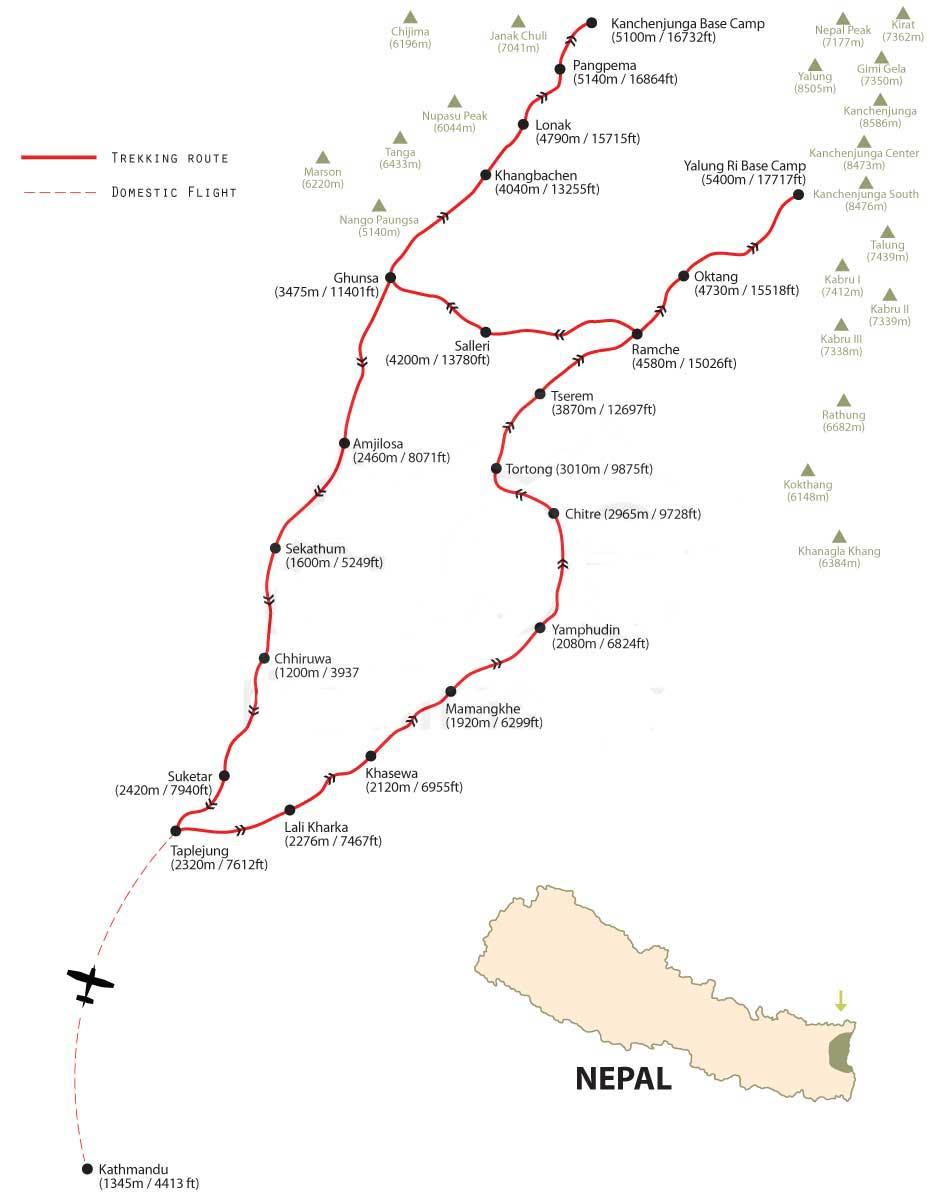
“ Join Upcoming Kanchanjunga Base Camp Trek starting from 19-10-2026 and 30-10-2026
Note: The above information is a guide and standard template of what we provide. Our trip can be customized at your request to accommodate your specific requirements.”
| Trip Facts | |
| Destination: | Kanchanjunga Region, Nepal |
| Trip Grade: | Moderate to Strenuous |
| Max Altitude: | 4,4610 M (Kanchanjunga Base Camp Trek) |
| Best Season: | Mar–May, Sep–Nov |
| Group Size: | 2–12 |
| Start/End: | Kathmandu |
| Accommodation: | Lodge, Camping (Any One) |
Trek Further. Trek Higher. Join the Journey for 2025-2026.
Challenge the Himalaya. Expedition Bookings Open for 2025–2026.
Ready for the Summit? Join Peak Climbing Season 2025–2026.
Introducing Nepal’s Newest Adventure: Everest Base Camp Drive Trek
What Our Client Says ?
Eric Larsen – Everest Expedition Summit 2010 Autumn
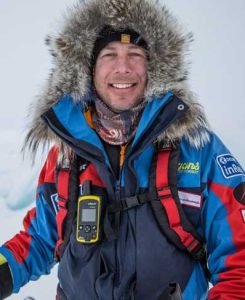
In autumn 2010, I joined the Everest Expedition organized by Himalayan Trail Blazer. Expeditions to Everest during the autumn season are rare, yet the team executed everything with outstanding professionalism, safety, and care. From the meticulous planning to the on-ground support, their expertise was evident at every step. I felt fully supported throughout the journey, and the experience remains one of the most memorable adventures of my life. I would highly recommend Himalayan Trail Blazer to anyone seeking a genuine and well-organized Himalayan expedition.”
Ryan Waters – Dhaulagiri Expedition 2010

Partnering with Himalayan Trail Blazer for the Dhaulagiri Expedition was an outstanding experience. Their logistical support, attention to detail, and deep knowledge of the Himalayan region made all the difference in ensuring the team’s safety and success. From the planning stages in Kathmandu to the final summit push, everything was handled with professionalism and genuine care. I’ve led expeditions across the world, and I can confidently say that Himalayan Trail Blazer sets a new standard in high-altitude guiding and support in Nepal.
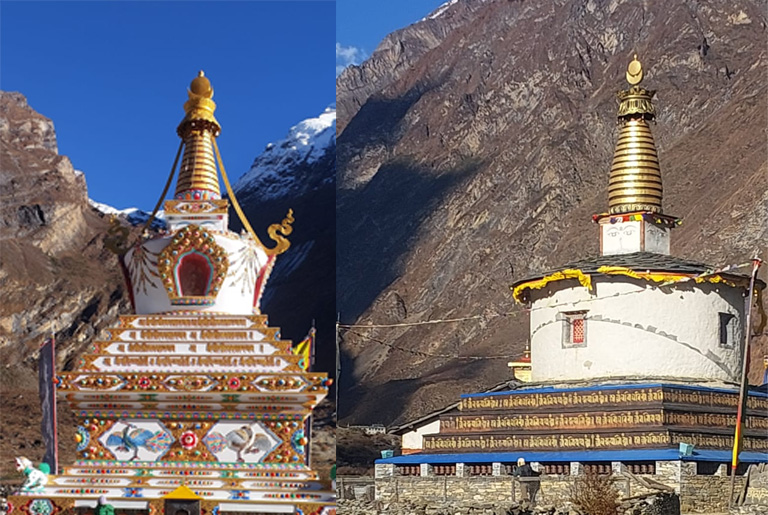
Tsum Valley Trek
Tsum Valley Manaslu Trek Trip Overview Itenary Detail Cost Include / Exclude FAQ Map The Tsum Valley Manaslu Trek is...
Read More
Lower Khumbu (Pikey Trek)
Lower Khumbu (Pikey Trek) Trip Overview Itenary Detail Cost Include / Exclude FAQ Map Following the footsteps of Hillary and...
Read More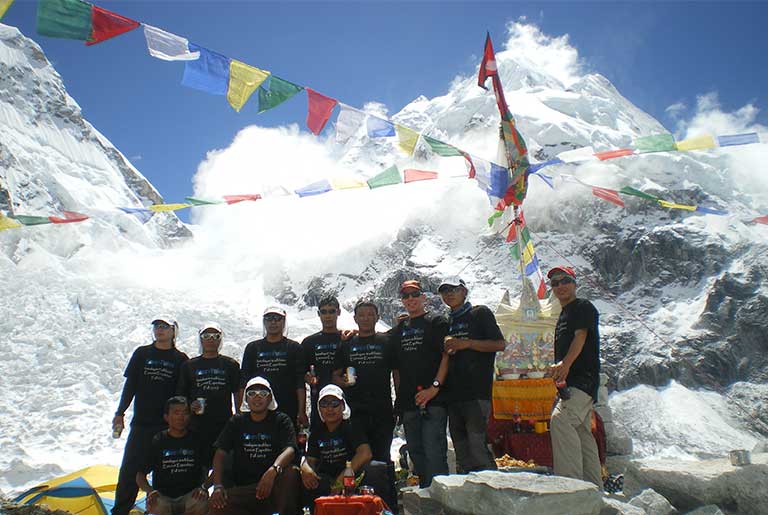
Everest Base Camp Drive Trek
Everest Base Camp Drive Optional Trip Overview Itenary Detail Cost Include / Exclude FAQ Map Following the footsteps of Hillary...
Read More
Manaslu Trek
Manaslu Trek Trip Overview Itenary Detail Cost Include / Exclude FAQ Map Trekking around Manaslu offers a unique opportunity to...
Read More
Kanchanjunga Base Camp Trek
Kanchanjunga Base Camp Trek Trip Overview Itenary Detail Cost Include / Exclude FAQ Map Kang-chen-zod-nga”, means “Five Great Treasuries of...
Read More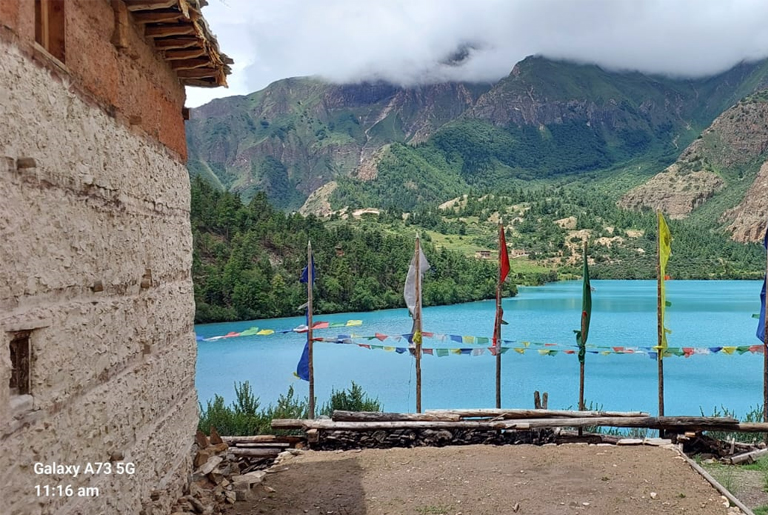
Lower Dolpo Trek
Lower Dolpo Trek Trip Overview Itenary Detail Cost Include / Exclude FAQ Map Make a rendezvous with the remote Himalaya...
Read More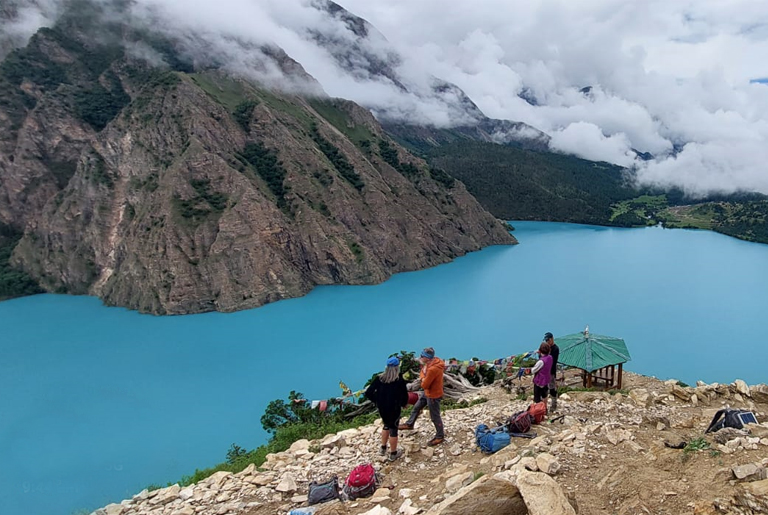
Upper Dolpo Trek
Upper Dolpo Trek Trip Overview Itenary Detail Cost Include / Exclude FAQ Map Dolpo, a land beyond the Himalayas, conjures...
Read More
Dhaulagiri Round Trek
Dhaulagiri Round Trek Trip Overview Itenary Detail Cost Include / Exclude FAQ Map Dhaulagiri 8,167m – the 7th highest mountain...
Read More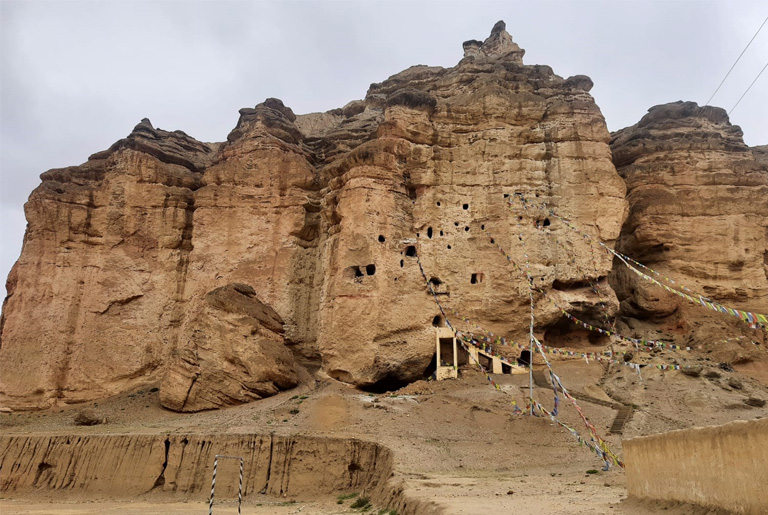
Upper Mustang Trek
Upper Mustang Trek Trip Overview Itenary Detail Cost Include / Exclude FAQ Map Trekking into Upper Mustang is a rare...
Read More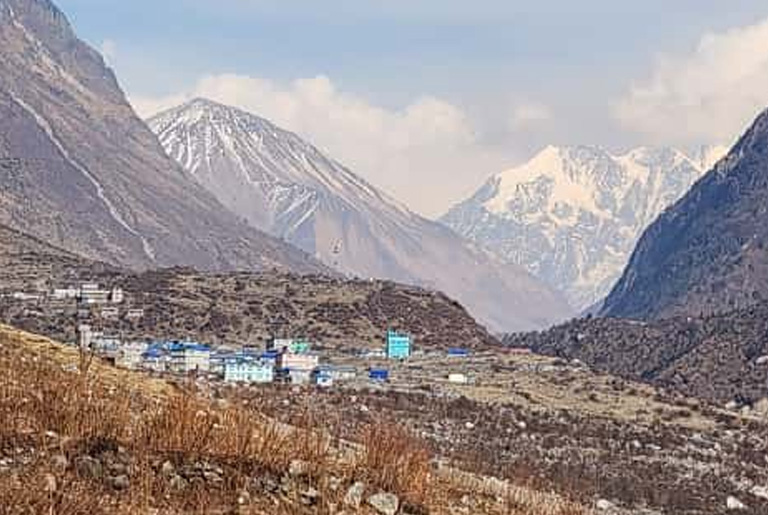
Lantang Valley Trek
Lantang Valley Trek Trip Overview Itenary Detail Cost Include / Exclude FAQ Map A trek to the Langtang valley has...
Read More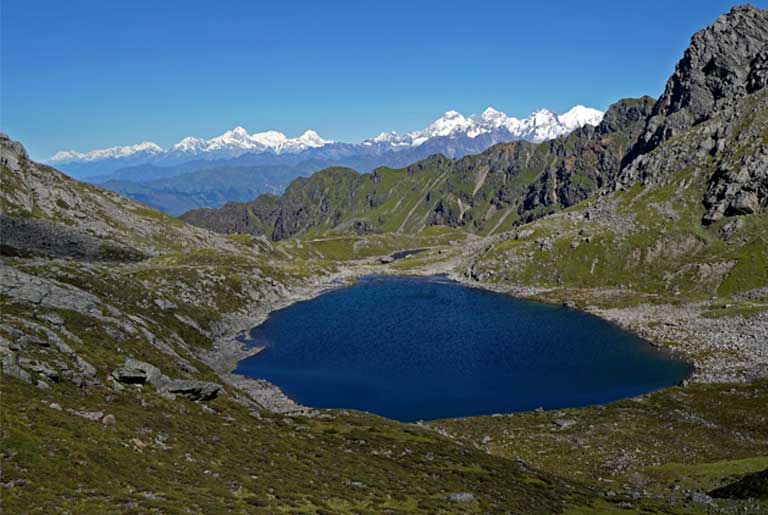
Langtang Gosaikunda Helambu Trek
Langtang Gosaikunda Helambu Trek Trip Overview Itenary Detail Cost Include / Exclude FAQ Map This classical trek combines three major...
Read More
Poon Hill Trek
Poon Hill Trek Trip Overview Itenary Detail Cost Include / Exclude FAQ Map The Annapurna Himalayan (Ghorepani and Poon Hill)...
Read More
Naar Phu Trek
Khangla & Thorang passes trek Trip Overview Itenary Detail Cost Include / Exclude FAQ Map Nar Phu, located in the...
Read More
Jomsom – Muktinath Trek
Joomsom - Muktinath Trek Trip Overview Itenary Detail Cost Include / Exclude FAQ Map The Jomsom and Muktinath trek is...
Read More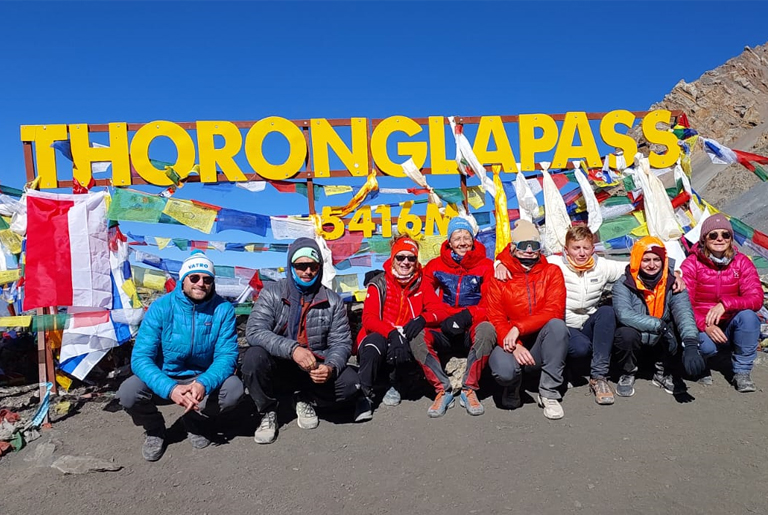
Annapurna Circuit Trek
Annapurna Circuit Trek Trip Overview Itenary Detail Cost Include / Exclude FAQ Map Since it opened to foreign trekkers in...
Read More
Annapurna Base Camp Trek
Annapurna base camp trek Trip Overview Itenary Detail Cost Include / Exclude FAQ Map Annapurna Base Camp Trek combines some...
Read More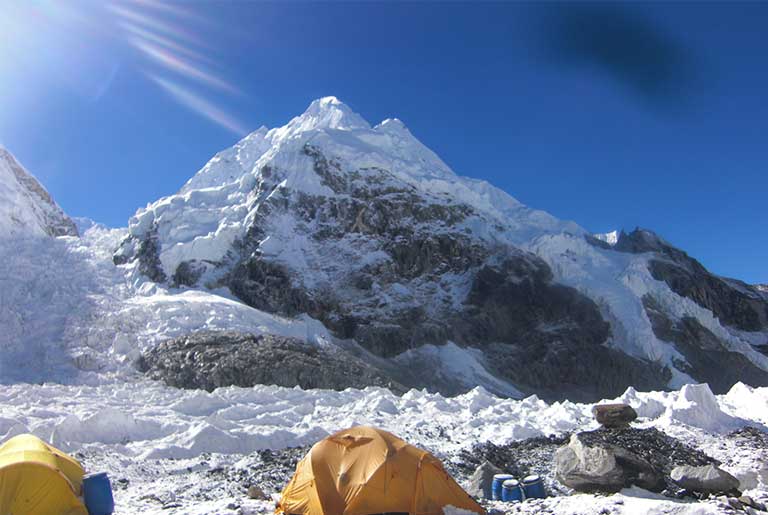
Classic Everest Trek
Classic Everest Trek Trip Overview Itenary Detail Cost Include / Exclude FAQ Map Classic Everest Trek (Jiri to Everest Base...
Read More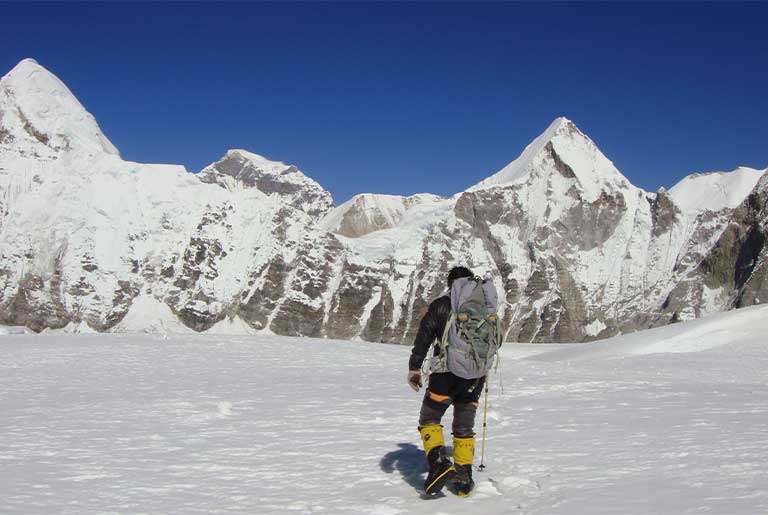
Renjo Pass Trek
Khumbu Three Passes Trek Trip Overview Itenary Detail Cost Include / Exclude FAQ Map Renjo-La pek is one of the...
Read More
Chola Pass Trek
Gokyo Chola Pass Everest Base Camp Trek Trip Overview Itenary Detail Cost Include / Exclude FAQ Map Chola Pass Trek...
Read More
Gokyo Trek
Gokyo Trek Trip Overview Itenary Detail Cost Include / Exclude FAQ Map Trekking around Gokyo valley is considered a traditional...
Read More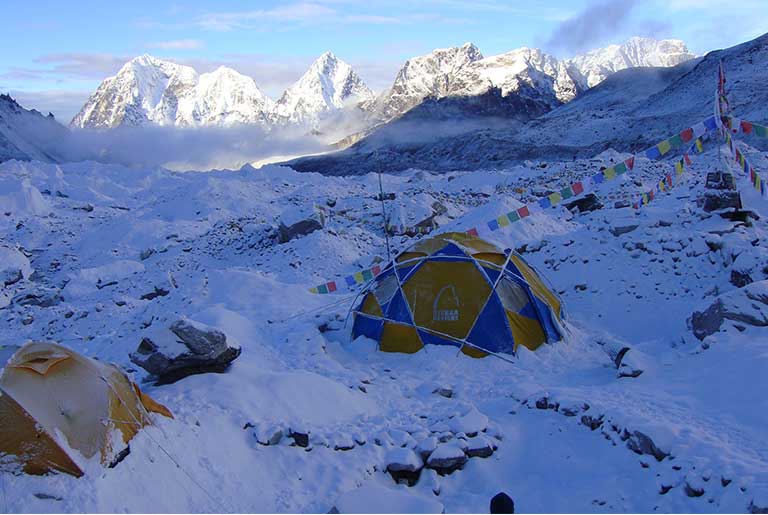
Everest Panorama Trek
Everest Panaroma Trek Trip Overview Itenary Detail Cost Include / Exclude FAQ Map This easy trek in the foothills of...
Read More
Everest Base Camp Trek
Everest Base Camp Trek Trip Overview Itenary Detail Cost Include / Exclude FAQ Map Following the footsteps of Hillary and...
Read More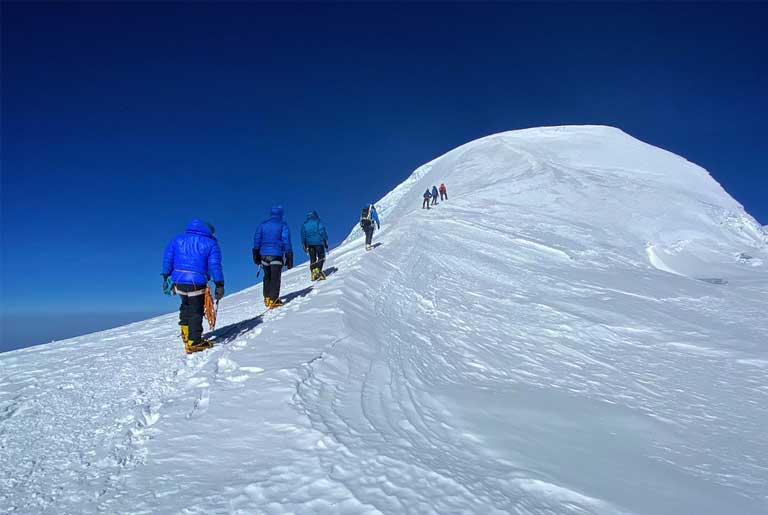
Mera Peak
Mera Peak Trip Overview Itenary Detail Cost Include / Exclude FAQ Map Mera Peak is the highest trekking peak in
Read More

Lower Khumbu (Pikey Trek)
Lower Khumbu (Pikey Trek) Trip Overview Itenary Detail Cost Include / Exclude FAQ Map Following the footsteps of Hillary and
Read More
Everest Base Camp Drive Trek
Everest Base Camp Drive Optional Trip Overview Itenary Detail Cost Include / Exclude FAQ Map Following the footsteps of Hillary
Read More

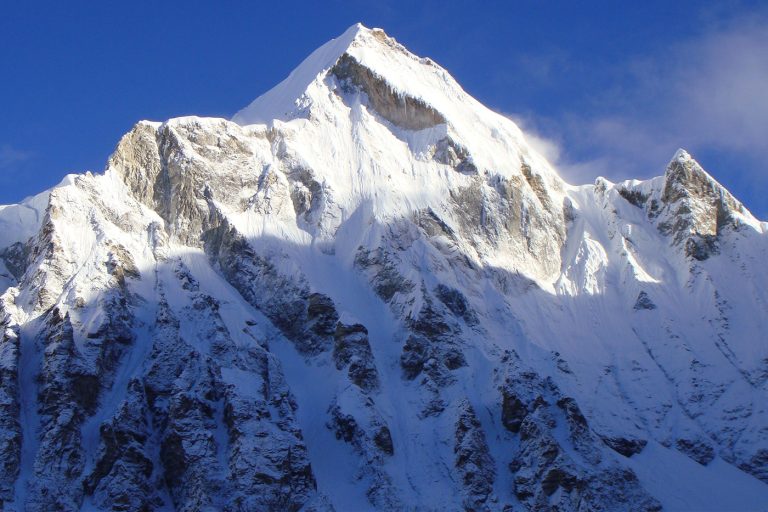
Everest Expedition 2015 Spring
Everest Expedition 2015 Spring Descriptions Himalayan Trail Blazer (HTB) has long been dedicated to organizing world-class climbing expeditions in the
Read More
Manaslu Expeditino, 2014, October
Manaslu Expedition, 2014, October Descriptions Himalayan Trail Blazer has long been recognized for its expertise in leading climbers through the
Read More
Manaslu Expeditino, 2013, October
Manaslu Expedition, 2013, October Descriptions Himalayan Trail Blazer Trekking & Expedition proudly announced the successful conclusion of its Manaslu Expedition
Read More
Manaslu Expedition, 2012, October
Manaslu Expedition, 2012, October Descriptions Manaslu, towering at 8,163 meters, is the eighth-highest mountain in the world. Nestled in the
Read More
Dhaulagiri Expedition 2012, March till
Dhaulagiri Expedition 2012, March till May - Organized by Himalayan Trail Blazer Descriptions In the spring of 2012, Himalayan Trail
Read More
Manaslu Expedition, 2011, October
Manaslu Expedition, 2011, October Descriptions In October 2011, Himalayan Trail Blazer organized a remarkable expedition to Manaslu, led by veteran
Read More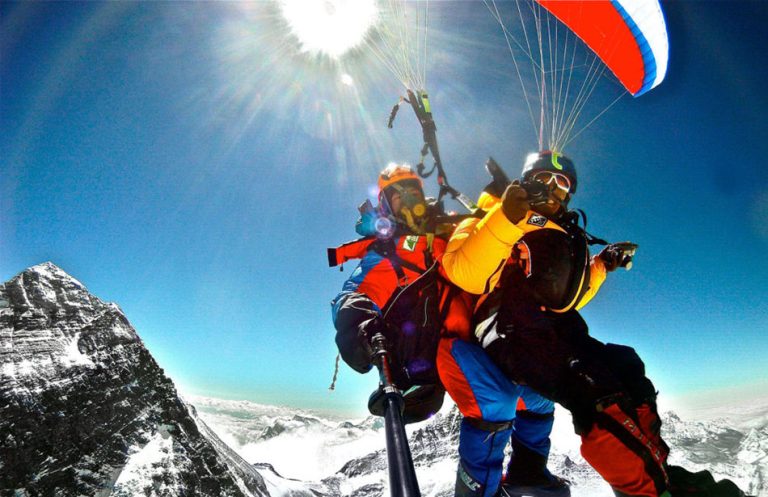
Summit to Sea, 2011 Spring
Summit to Sea, 2011 Spring https://youtu.be/pZ46cuM62ZE?si=oxNaAtznxP38eIK6 Descriptions On June 27, 2011, with the support of Himalayan Trail Blazer, adventurers Mr.
Read More
Everest Expedition via South –
Everest Expedition via South - 2010, October (SAVE THE POLES) -- Eric Larsen Descriptions In Support with Himalayan Trail Blazer,
Read More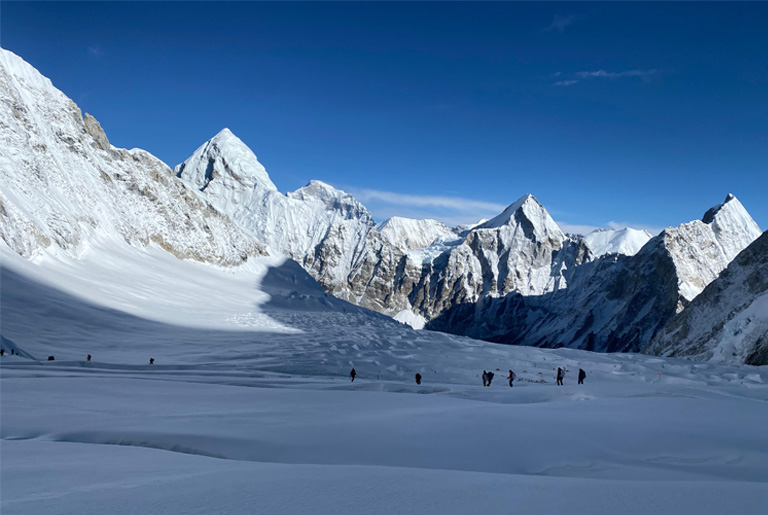
Mt. Lhotse Expedition
Mt. Lhotse Expedition (8516m) Trip Overview Itenary Detail Cost Include / Exclude FAQ Map “Lhotse” which means south peaks is
Read More
Tharpa Chuli Peak
Tharpa Chuli Peak Trip Overview Itenary Detail Cost Include / Exclude FAQ Map Tharphu Chuli (locally known as), Tent Peak
Read More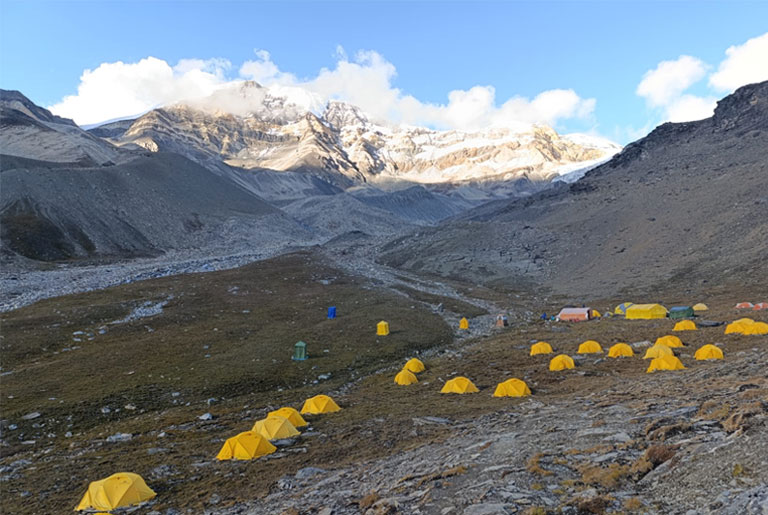
Chulu Far-East Peak
Chulu East Peak Trip Overview Itenary Detail Cost Include / Exclude FAQ Map These peaks are part of the Manang
Read More
Pisang Peak
Pissang Peak Trip Overview Itenary Detail Cost Include / Exclude FAQ Map Pisang Peak stands at elevation of 6091 meters
Read More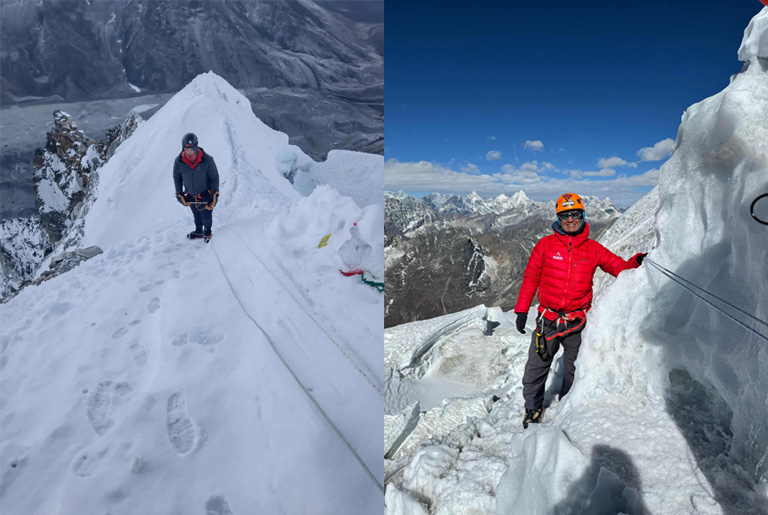
Island Peak
Island Peak Trip Overview Itenary Detail Cost Include / Exclude FAQ Map Island Peak is 6187 meters high and one
Read More
Lobuche Peak
Lobuche Peak Trip Overview Itenary Detail Cost Include / Exclude FAQ Map Lobuche Peak 6119m is one of the popular
Read More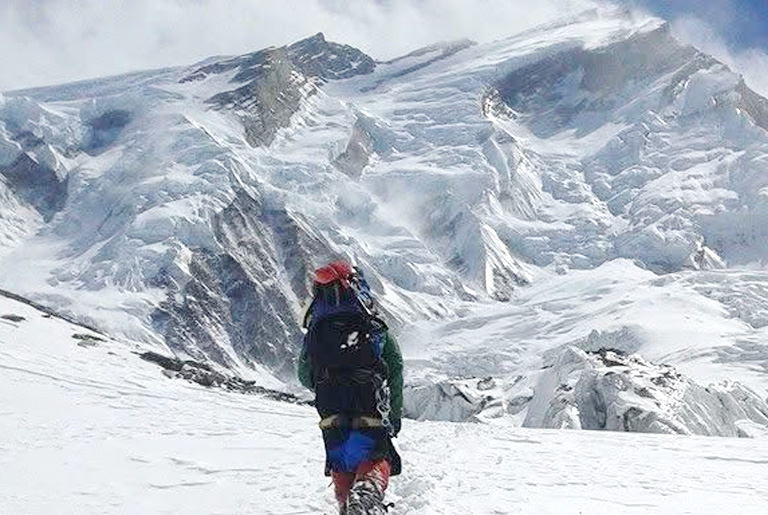
Mt. Annapurna I Expedition
Mt. Annapurna I Expedition (8091m) Trip Overview Itenary Detail Cost Include / Exclude FAQ Map Annapurna is an enormous Himalayan
Read More
Mt. Manaslu Expedition (8163m)
Mt. Manaslu Expedition (8163m) Trip Overview Itenary Detail Cost Include / Exclude FAQ Map Mt. Manaslu (8,163m / 26,781ft) Located
Read More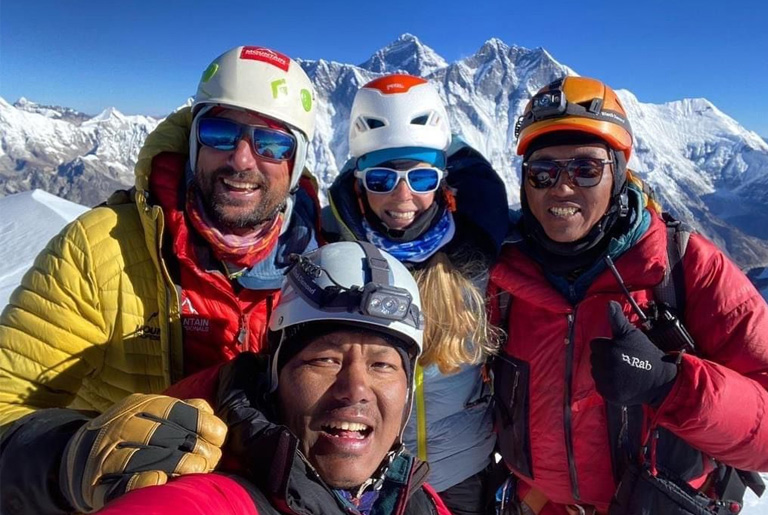
Mt. Amadablam Expedition (6812m)
Mt. Amadablam Expedition (6812m) Trip Overview Itenary Detail Cost Include / Exclude FAQ Map Mt. Ama Dablam expedition has long
Read More
Mt. Everest Expedition (8848m) via
Mt. Everest Expedition (8848m) via South Trip Overview Itenary Detail Cost Include / Exclude FAQ Map The highest summit alone
Read More


Lower Dolpo Trek
Lower Dolpo Trek Trip Overview Itenary Detail Cost Include / Exclude FAQ Map Make a rendezvous with the remote Himalaya
Read More
Upper Dolpo Trek
Upper Dolpo Trek Trip Overview Itenary Detail Cost Include / Exclude FAQ Map Dolpo, a land beyond the Himalayas, conjures
Read More
Dhaulagiri Round Trek
Dhaulagiri Round Trek Trip Overview Itenary Detail Cost Include / Exclude FAQ Map Dhaulagiri 8,167m – the 7th highest mountain
Read More

Lantang Valley Trek
Lantang Valley Trek Trip Overview Itenary Detail Cost Include / Exclude FAQ Map A trek to the Langtang valley has
Read More


Naar Phu Trek
Khangla & Thorang passes trek Trip Overview Itenary Detail Cost Include / Exclude FAQ Map Nar Phu, located in the
Read More

Annapurna Circuit Trek
Annapurna Circuit Trek Trip Overview Itenary Detail Cost Include / Exclude FAQ Map Since it opened to foreign trekkers in
Read More
Annapurna Base Camp Trek
Annapurna base camp trek Trip Overview Itenary Detail Cost Include / Exclude FAQ Map Annapurna Base Camp Trek combines some
Read More
Classic Everest Trek
Classic Everest Trek Trip Overview Itenary Detail Cost Include / Exclude FAQ Map Classic Everest Trek (Jiri to Everest Base
Read More
Renjo Pass Trek
Khumbu Three Passes Trek Trip Overview Itenary Detail Cost Include / Exclude FAQ Map Renjo-La pek is one of the
Read More
Chola Pass Trek
Gokyo Chola Pass Everest Base Camp Trek Trip Overview Itenary Detail Cost Include / Exclude FAQ Map Chola Pass Trek
Read More

Everest Panorama Trek
Everest Panaroma Trek Trip Overview Itenary Detail Cost Include / Exclude FAQ Map This easy trek in the foothills of
Read More
Everest Base Camp Trek
Everest Base Camp Trek Trip Overview Itenary Detail Cost Include / Exclude FAQ Map Following the footsteps of Hillary and
Read More





